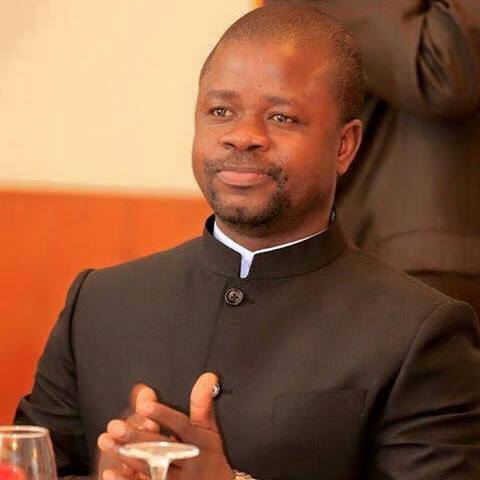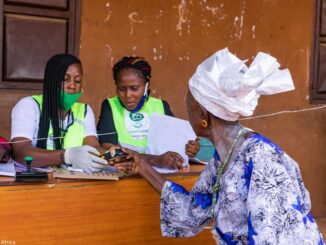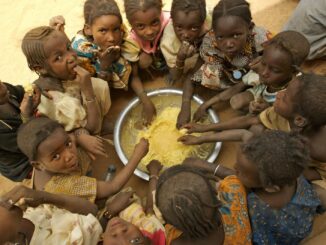
John Baimba Sesay
Geoff R. Berridge is Emeritus Professor of International Politics, University of Leicester. He is highly rated as the most prolific contemporary writer on diplomacy. Berridge has authored numerous books on diplomacy, including Diplomacy: Theory And Practice. In the said book, he saw diplomacy as essentially a political activity “well resourced and skilful, a major ingredient of power.” The chief purpose of diplomacy, he argued in this book, “is to enable states to secure the objectives of their foreign policies without resort to force, propaganda, or law.”
Diplomacy, too, is an institution, argues Jean-Robert Leguey-Feilleux, in his work titled “The Dynamics Of Diplomacy”, noting however that the subject matter of diplomacy, too, has vastly expanded. With high politics and strategic interests still prominent in the art, it now also includes questions of international security, “but a vast variety of other matters have been added to the diplomatic agenda, pertaining to the economy, technology, scientific developments, education, the arts, law, and so much more. There is virtually no aspect of life in society that has not, at one time or another, been on the diplomatic agenda.” Interdependence and globalization, he submits, “have greatly contributed to this development.”
On July 29th, 1971, precisely forty-five years ago, Siaka Stevens (Sierra Leone) and Chairman Mao Zedong (China), both of blessed memories, made one of the most historic decisions of establishing diplomatic ties at the level of government, eventually opening a fresh episode in the friendship between the two. The text of the 1971 communiqué on the establishment of diplomatic relations at the ambassadorial level stated amongst other things, that “the two governments agree to develop diplomatic relations, friendship and cooperation between them on the basis of the principles of mutual respect for sovereignty and territorial integrity, mutual non-aggression, non-interference in each other’s internal affairs, equity and mutual benefit, and peaceful co-existence.”
Both countries have had unbroken forty-five years of friendship with mutual support and respect not only at the level of bilateral cooperation, but also at the multilateral level. In chapter 4 of Frederick S. Arkhurst’s book, “African Diplomacy the UN Experience”, the author gives a vivid account of the role played by African nations in dealing with the question of Chinese Representation in the United Nations. Sierra Leone, it must be noted was a principal player in all of this, when Solomon A.J Pratt was our foreign minister.
Forty-five years counting, we have also seen China as a constant development partner of Sierra Leone. In a Policy Brief-China’s Silent Storm in Sierra Leone, SAIIA Policy Briefing 7, Simone Datzberger opined that China remains a major player in Sierra Leone’s growth efforts, principally in the areas of infrastructure, health, human resource development, mining, and agriculture. Its developmental assistance to Sierra Leone, he submits, “normally encompasses donations, education and training programmes, food aid, health care and infrastructure” and that next to multilateral and international community support, the influence of China, in the implementation of Sierra Leone’s growth roadmap cannot be overlooked.
In a 2015 visit to Sierra Leone, Chinese foreign minister, Wang Yi highlighted areas of further cooperation with Sierra Leone including strengthening Sierra Leone’s medical and public health infrastructure, through the establishment of a West African Center for Disease Control and Prevention; cooperation in mining and industry; fishing and agriculture; promoting human resource development and continuing to support infrastructural development. To this end, we continue to see serious interventions in these areas. For instance, in the last ninety days, we have received as an embassy over 100 Sierra Leoneans coming on various training and seminar sessions.
These cooperation areas are in line with the December 2015 Johannesburg Summit/Sixth Ministerial Conference which brought about the Johannesburg Action Plan 2016-2018, which outlined areas of development cooperation between China and Africa. Such areas include agriculture and food security, industry partnership and capacity cooperation, energy and natural resources, marine, tourism and cultural cooperation. In fact, the 2012 Fifth FOCAC Ministerial Meeting saw then President Hu Jintao highlighting a five point action plan for cooperation between China and Africa; opening up new prospects in building a new type of China-Africa strategic partnership including; opening up new prospects for the new type of China-Africa strategic partnership, in terms of working towards strengthening the political mutual trust between China and Africa; working towards expanding practical cooperation between China and Africa, increasing cultural and people-to-people exchanges.
In a May 2015 address at Gannan Normal University, China, S.N Dumbuya, Registrar of the University of Sierra Leone referenced how the development cooperation between the two countries “waned during the post Siaka Stevens era, but recently with the return to office of the All People’s Congress under the leadership of His Excellency the President Dr. Ernest Bai Koroma, there seems to have been a rapid resurgence of the special relationship between China and Sierra Leone.” This assertion is true and realistic. Indeed, there has been a boom in ties between the two nations with huge Chinese investment in a range of sectors under the presidency of Ernest Bai Koroma. There have been some sort of special ties of friendship and cooperation in the last decade or so between the two republics and thanks to the astuteness of President Koroma.
The prompt response by the Chinese in tackling the Ebola virus, including their commitment to see the construction of a new airport on the mainland in the Port Loko District, added to plans for the construction of a regional centre for disease control are all strong indications of how great there has been a surge in ties between the two nations under the presidency of Dr. Ernest Bai Koroma.
China is Sierra Leone’s major development and trade partner. Trade and economic relations between them have developed steadily over the years. By 2014, “the economic and trade volume between the two countries exceeded US$1.8 billion, an increase of 15.4% over the previous year, revealing that China is Sierra Leone’s largest trading partner.” (Source: Ambassador Zhao Yanbo in a statement on 29th September 2015 at a reception commemorating 66th anniversary of the founding of the People’s Republic of China).
Chinese foreign direct investment in African countries grew from US$ 500 million in 2003 to almost US$15 billion by 2012, writes Wail Benjelloun in “A China–Africa Co-operation: Capacity Building and Social Responsibility of Investments”. Factually, the same year (2012) saw then Premier Hu Jintao pledging US$20 billion in loans for infrastructure development towards Africa. Premier Li Keqiang then made an “additional US$12 billion in credit and funding to boost economic development on the continent”. 2015 saw the Chinese making another commitment of US$ 60 billion to Africa.
How far have we come in all of this as a country? Yes, forty-five years of diplomatic and people-to-people relations have had their better sides as well as challenging moments. Both countries continue to work assiduously in not just lifting the bars of cooperation ties, but further exploring ways of fostering the friendship. Miles covered, dozens more to overcome, but holistically, we have made some mark.




